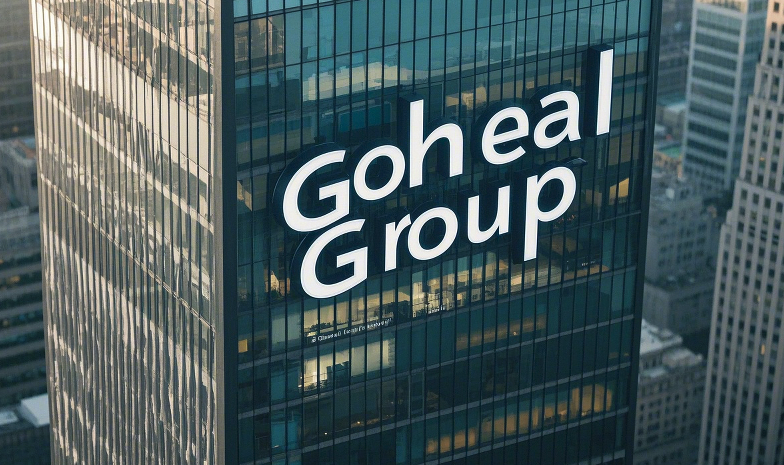The Art of War by Sun Tzu says: "A good warrior seeks advantage from the situation, not from others." The capital market is like a battlefield. How to use the momentum of capital, rather than relying solely on internal growth, is a question that decision makers of listed companies must think about. Today, with the intensified volatility of the capital market and the continuous change of the industrial structure, the financial optimization of enterprises is no longer just a digital game, but a key path to survival and breakthrough. From financing layout to asset restructuring, from shareholder structure adjustment to industrial upgrading, every step tests the capital operation ability of enterprises.

American Goheal M&A Group
Goheal has been deeply involved in the field of mergers and acquisitions and capital operation for a long time, and is well aware of the hidden battlefield of enterprises in financial optimization and strategic transformation. Today, we will dismantle the multi-dimensional strategy of capital operation of listed companies.
Financial optimization: a compulsory course in the capital market
The first step of capital operation is the optimization of financial structure. Without a healthy financial system, the capital market will not buy it, and it is difficult for enterprises to get real help from capital operation. Reasonable financial optimization involves multiple levels: leverage level, cash flow management, equity structure adjustment, etc. The core goal is to maximize capital efficiency on the basis of maintaining stable operation.
For example, in recent years, some listed companies have introduced strategic investors through targeted share issuance, which not only obtained financial support but also strengthened industrial synergy. In the early stages of development, a certain technology company over-reliant on bank loans and was under great financial pressure. By introducing PE (private equity investment) institutions as long-term shareholders, the company not only reduced its debt burden, but also expanded new markets with the help of capital. This capital operation strategy is not just a simple financing, but also makes the financial structure healthier and promotes the development of the company.
Cash flow management is a key variable in capital operation. Many companies are in crisis not because of poor business, but because of cash flow management errors. When studying the capital structure of enterprises, Goheal found that some companies, even if they have strong profitability, eventually fall into the dilemma of tight capital chain due to excessive accounts receivable and heavy financing costs. Therefore, in the process of capital operation, enterprises must pay attention to the balance between short-term liquidity and long-term investment to ensure sound cash flow management.
Capital market operations: synergy of financing, mergers and acquisitions and restructuring
The capital market provides a variety of possibilities for corporate growth, not just a financing platform. IPO (initial public offering) is the dream goal of many companies, but the rules of the game in the capital market are not just as simple as listing and financing. Listed companies must consider how to use secondary market financing, how to design shareholder structure, and how to achieve scale expansion through mergers and acquisitions.
Mergers and acquisitions are advanced means of capital operation, which can not only help companies expand rapidly, but also optimize industrial layout. An international retail giant has successfully expanded its overseas market and achieved global layout through a series of precise mergers and acquisitions. Compared with simple market expansion, mergers and acquisitions often bring more direct synergy effects, including supply chain integration, brand value enhancement, channel optimization, etc.
However, mergers and acquisitions are not a panacea, and failure cases are also everywhere. When some companies merge and acquire, they only focus on short-term stock price reactions, but ignore the issues of cultural integration and business integration. A manufacturing company once spent a huge amount of money to acquire an overseas counterpart, but ultimately suffered losses due to conflicts in management concepts and improper supply chain integration. This also reminds listed companies that in the process of capital operation, strategy and execution are equally important, and they should not blindly pursue the misunderstanding that "mergers and acquisitions are growth".
In the capital market, another tool that is easily overlooked is equity incentives. For high-growth companies, how to attract and retain core talents is crucial. Many companies use equity incentive plans to allow the management team to form a long-term interest bond with the company, avoiding short-term profit-seeking behavior. Goheal's research shows that in the long run, companies that implement reasonable equity incentives tend to be more resilient in market competition.
From capital to strategy: the key path to corporate transformation
The ultimate goal of capital operation is not only to allow companies to obtain more funds, but also to promote companies to enter a new stage of development. This involves a deeper question: How can capital promote strategic transformation?
Some companies have completed the leap from traditional industries to emerging industries through capital operation. For example, a traditional manufacturing company successfully entered a new track by acquiring a new energy company when facing a slowdown in industry growth. This capital-driven industrial transformation not only reduces the company's dependence on a single business, but also enhances future growth potential.
Another common strategy is to achieve international layout through capital operation. A local consumer brand was originally sold only in the domestic market, but by acquiring an international brand, it not only obtained overseas channels, but also increased its brand premium. This case of achieving global expansion with the help of the capital market has been common in recent years and has become an important means for corporate transformation and upgrading.
Of course, strategic transformation is not easy. The capital market has high expectations for short-term performance, and corporate transformation often requires a long period of time. Therefore, how to find a balance between short-term market pressure and long-term development goals is one of the biggest challenges in corporate capital operations.
Conclusion: The art of capital operation lies in balance and choice
Capital operation is not a simple "money-raising game", it is an art of growth, stability and transformation. The capital operation strategy of an enterprise is not only about financial figures, but also determines whether the enterprise can be invincible in market competition. How to find the best solution for yourself in the multi-dimensional operation of the capital market? How to strike a balance between financial optimization, financing and mergers and acquisitions, and strategic transformation? Has your company ever experienced a critical moment in capital operation? Welcome to leave a message in the comment area to discuss, let us explore more possibilities of capital operation together!

Goheal Group
[About Goheal] Goheal is a leading investment holding company focusing on global mergers and acquisitions holdings. It has been deeply involved in the three core business areas of acquisition of listed company control, mergers and acquisitions of listed companies and capital operations of listed companies. With its deep professional strength and rich experience, it provides enterprises with full life cycle services from mergers and acquisitions to restructuring and capital operations, aiming to maximize corporate value and achieve long-term benefit growth.